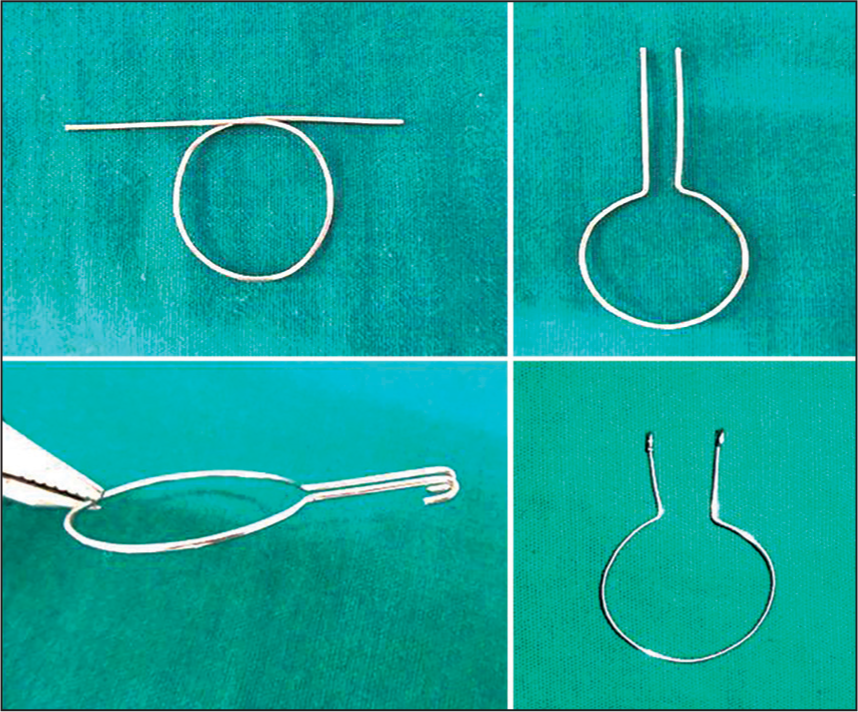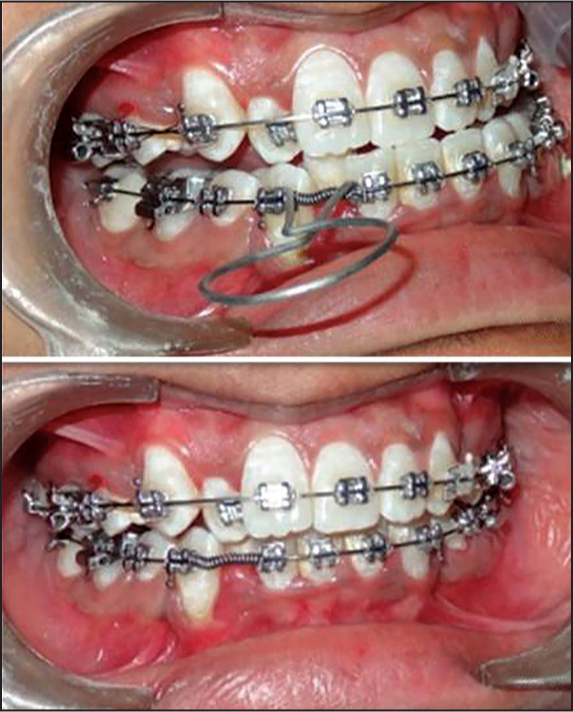Translate this page into:
‘O’ device: For easy placement of open coil spring
Address for Correspondence: Dr. Chetan Shankar, Department of Orthodontics, College of Dental Sciences, Davangere - 577 004, Karnataka, India. E-mail: shankar_chetan@yahoo.co.in
This article was originally published by Wolters Kluwer and was migrated to Scientific Scholar after the change of Publisher.
Abstract
A self-customized, cost-effective, easily adaptable “O” device is designed to place open coil spring, which can be used in any area of either arch.
Keywords
O device
open coil spring
space gaining
INTRODUCTION
Open coil springs are mainly used for opening spaces to relieve crowding or for the distalization of the molars.[1] Open coil spring activated by compression and exerts a net “pushing” force in two directions away from its center.[2] Insertion of a compressed open coil spring to a coveted working area of interest for space gaining can at times be very difficult due to the inherent delicacy and flexibility of the coil system. Simultaneous stabilization and compression of open coil spring are of utmost importance for ease of insertion. Hence, we have designed a spring holder, which acts as a sound stabilizing applicator forceps, which keeps the coil compressed and helps in carrying out concomitant insertion procedures with ease.
FABRICATION
With a 0.9 mm stainless steel wire, make a circle of 15 mm diameter, keeping the free ends of the circle extending out to about 15 mm in length [Figure 1a].

- Fabrication of “O” device
At the crossover make 90° bends away from the circle [Figure 1b], and make a hook at each free end of the arm [Figure 1c and d].
PROCEDURE
Sterilize the “O” device before use.
Place desired length of open-coil spring over the archwire at the desired location.
Engage one hook of the spring holder over the archwire at the distal end of the open coil spring [Figure 2a]. Compress the circle such that the other free/unengaged hook crosses over the engaged hook and engages the mesial end of open coil spring [Figure 2b]. When the compressed circle is released, it recoils to its original position compressing the engaged open coil spring [Figure 2c].
 Figure 2
Figure 2- Insertion of “O” device on to archwire
The archwire can now be easily ligated.
Remove the spring holder hooks one at a time, releasing the compressed open coil spring between the brackets [Figure 3].
 Figure 3
Figure 3- “O” device in patient
For use in the posterior region, a 90° bend is given at the junction of the circle and arms [Figure 4], so that the circle does not infringe cheek mucosa.
 Figure 4
Figure 4- “O” device for posterior region
More force for compressing the open coil spring can be achieved by moving vertical arms further away from each other by opening the circle before insertion.
The advantages of “O” device are: Can be easily fabricated, inexpensive as it does not require any special materials, can be reused and can be used in any area of either arch.
Source of Support:
Nil.
Conflict of Interest:
None declared.
References
- Force delivery of Ni-Ti coil springs. Am J Orthod Dentofacial Orthop. 1996;109:8-21.
- [Google Scholar]
- Orthodontic force characteristics of open coil springs. Am J Orthod. 1984;85:494-7.
- [Google Scholar]






